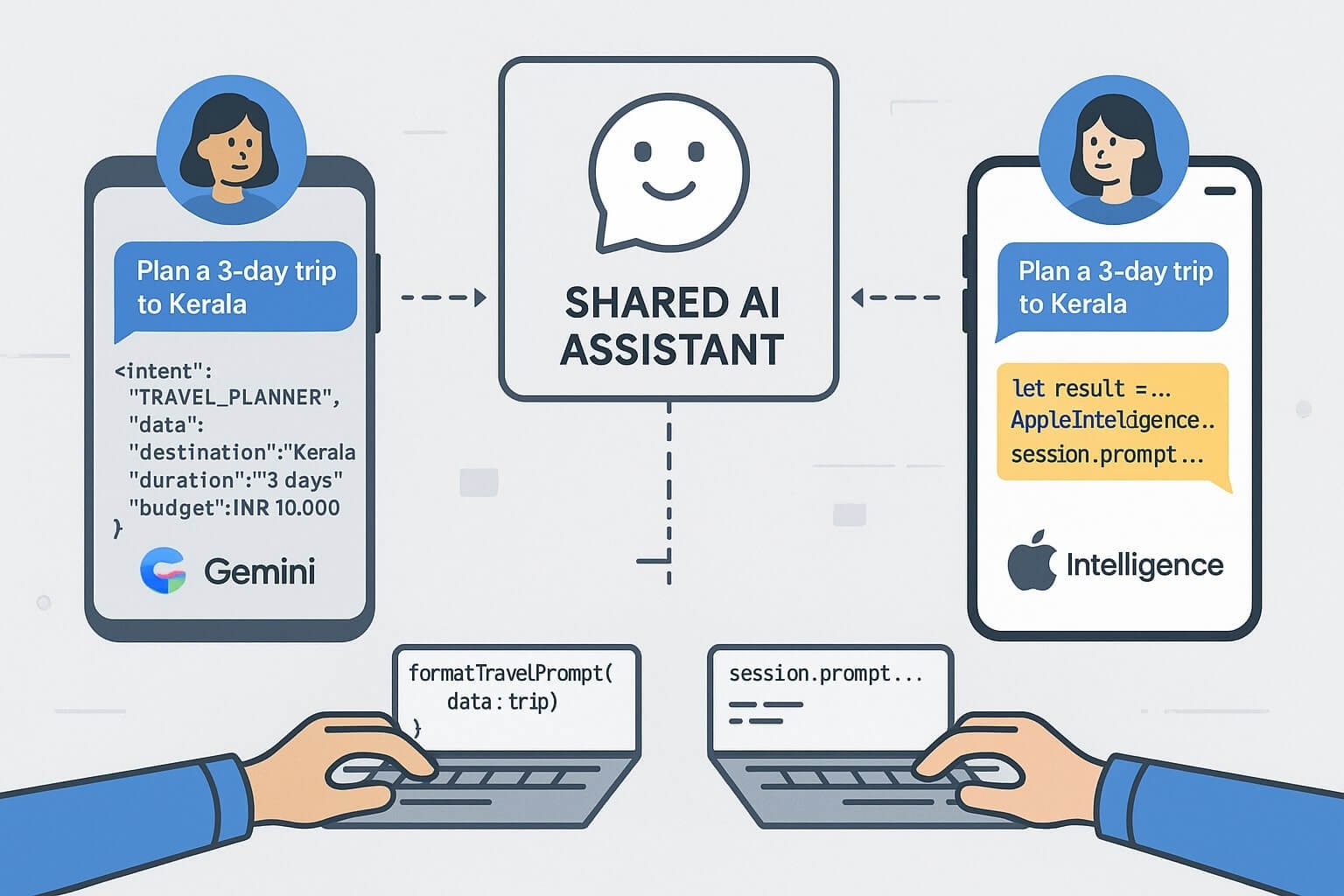Developers are now building intelligent features for both iOS and Android — often using different AI platforms: Gemini AI on Android, and Apple Intelligence on iOS. So how do you build a shared assistant experience across both ecosystems?
This post guides you through building a cross-platform AI agent that behaves consistently — even when the underlying LLM frameworks are different. We’ll show design principles, API wrappers, shared prompt memory, and session persistence patterns.
📦 Goals of a Shared Assistant
- Consistent prompt structure and tone across platforms
- Shared memory/session history between devices
- Uniform fallback behavior (offline mode, cloud execution)
- Cross-platform UI/UX parity
🧱 Architecture Overview
The base model looks like this:
[ Shared Assistant Intent Engine ]
/ \\
[ Gemini Prompt SDK ] [ Apple Intelligence APIs ]
(Kotlin + AICore) (Swift + AIEditTask)
\\ /
[ Shared Prompt Memory Sync ]
Each platform handles local execution, but prompt intent and reply structure stay consistent.
🧠 Defining Shared Prompt Intents
Create a common schema:
{
"intent": "TRAVEL_PLANNER",
"data": {
"destination": "Kerala",
"duration": "3 days",
"budget": "INR 10,000"
}
}
Each platform converts this into its native format:
Apple Swift (AIEditTask)
let prompt = """
You are a travel assistant. Suggest a 3-day trip to Kerala under ₹10,000.
"""
let result = await AppleIntelligence.perform(AIEditTask(.generate, input: prompt))
Android Kotlin (Gemini)
val result = session.prompt("Suggest a 3-day trip to Kerala under ₹10,000.")
🔄 Synchronizing Memory & State
Use Firestore, Supabase, or Realm to store:
- Session ID
- User preferences
- Prompt history
- Previous assistant decisions
Send current state to both Apple and Android views for seamless cross-device experience.
🧩 Kotlin Multiplatform + Swift Interop
Use shared business logic for agents in Kotlin Multiplatform Mobile (KMM) to export common logic to iOS:
// KMM prompt formatter
fun formatTravelPrompt(data: TravelRequest): String {
return "Plan a ${data.duration} trip to ${data.destination} under ${data.budget}"
}
🎨 UI Parity Tips
- Use SwiftUI’s glass-like cards and Compose’s Material3 Blur for parity
- Stick to rounded layouts, dynamic spacing, and minimum-scale text
- Design chat bubbles with equal line spacing and vertical rhythm
🔍 Debugging and Logs
- Gemini: Use Gemini Debug Console and PromptSession trace
- Apple: Xcode AI Profiler + LiveContext logs
Normalize logs across both by writing JSON wrappers and pushing to Firebase or Sentry.
🔐 Privacy Considerations
- Store session data locally with user opt-in for cloud sync
- Mark cloud-offloaded prompts (on-device → server fallback)
- Provide export history button with logs + summaries
✅ Summary
Building shared AI experiences across platforms isn’t about using the same LLM — it’s about building consistent UX, logic, and memory across SDKs.

